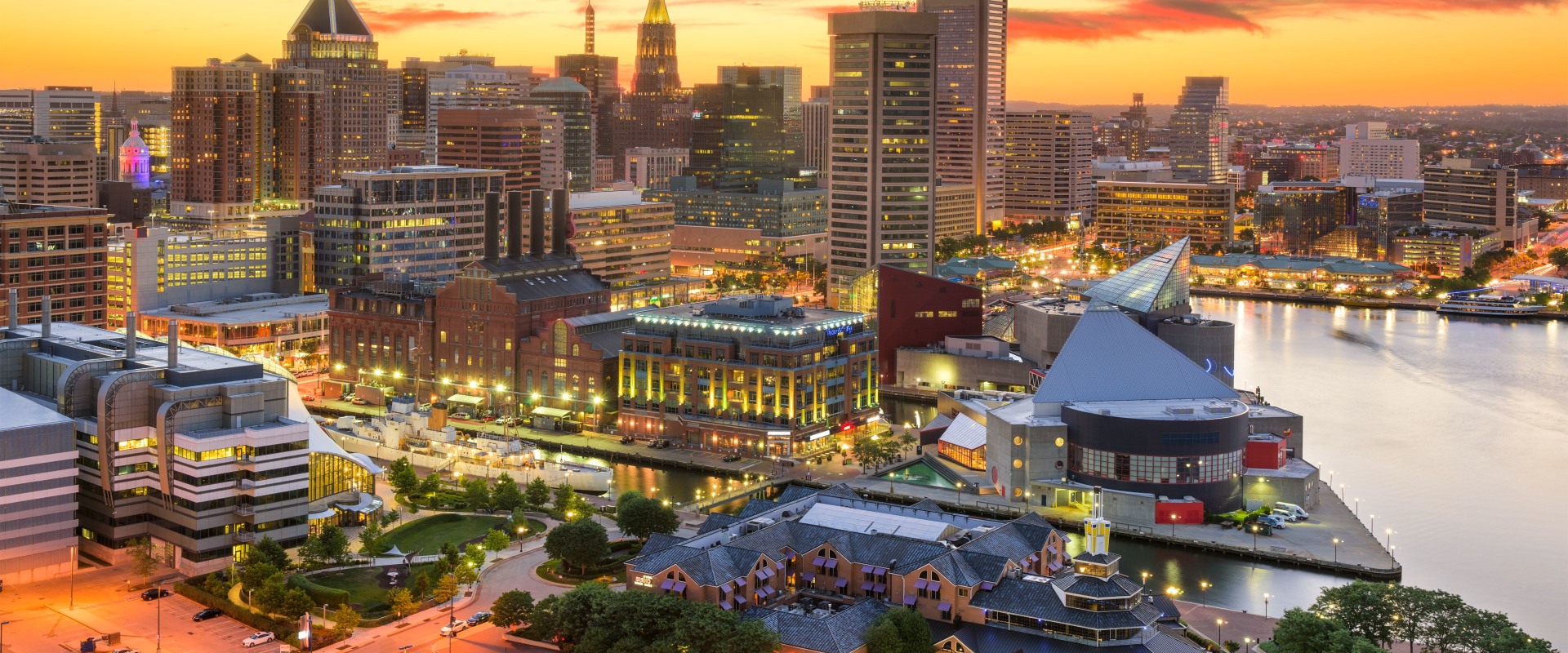When it comes to operating a vehicle in Maryland, it is important to understand the speed limit laws. Speed limits are put in place to keep everyone safe and to ensure that traffic flows smoothly. In this article, we will provide an overview of Maryland's speed limit laws, so that you can make sure you are following the law when you are driving. In Maryland, the speed limit is determined by the type of roadway you are on. On highways and interstates, the speed limit is generally 65 mph.
On rural two-lane roads, the speed limit is usually 55 mph. In urban areas, the speed limit can vary from 25 mph to 45 mph, depending on the area. It is important to note that certain roads may have different speed limits than what is outlined above. For example, some roads may have a lower speed limit due to the presence of pedestrians or other safety concerns. Additionally, certain roads may have higher speed limits for vehicles with special permits. It is important to be aware of posted signs indicating the speed limit and to follow them.
Violating speed limit laws can result in a fine or other penalties. Additionally, it is important to note that there may be additional speed limits in certain situations, such as when passing or when driving on a highway with multiple lanes. By understanding Maryland's speed limit laws, you can make sure that you are driving safely and legally when you are on the road. In Maryland, speed limit laws exist to protect drivers, passengers, pedestrians, and cyclists. There are several types of speed limits that exist in the state, including maximum speed limits, minimum speed limits, and advisory speed limits. Maximum speed limits are the highest speed allowed on a given roadway, while minimum speed limits are the lowest speed allowed.
Advisory speed limits are posted to advise drivers of the safest speeds to travel in certain areas. Speed limit laws are enforced in Maryland through traffic cameras and police officers. Law enforcement officers have the authority to issue citations for speeding violations. Speed limit enforcement is not limited to highways, but can also be found on residential streets and school zones.
In certain situations, speed limits may be overridden or ignored. For example, emergency vehicles may exceed the posted speed limit when responding to an emergency call. Additionally, some roads may have no posted speed limit due to unique characteristics such as sharp curves or steep grades. Violating speed limit laws in Maryland can result in fines and points on a driver's license.
Depending on the severity of the violation, a driver may face higher fines or even license suspension. It is important for drivers to obey speed limits at all times to ensure safety for everyone on the road.
Exceptions
In some cases, speed limits in Maryland may be overridden. This includes when an emergency vehicle is in use, such as a police car, ambulance, or fire truck. Drivers must move out of the way for any emergency vehicle and follow all instructions given by law enforcement.In addition, road conditions may influence speed limits. For instance, if the road is icy or wet, drivers may be asked to reduce their speed. This is done to ensure the safety of all vehicles on the road. Finally, drivers may be allowed to drive faster than the posted speed limit when passing other vehicles. This is only allowed if the driver can do so safely and without endangering other drivers.
Areas Where Speed Limits Are Enforced
Speed limits are enforced in most areas of Maryland.This includes highways, city streets, and rural areas. In some cases, speed limits may be different for different types of roads. For example, speed limits are lower on highways than on city streets. Speed limits are also lower in rural areas than in urban areas. Speed limits are also enforced at intersections.
Drivers must obey the speed limit sign posted at the intersection. Drivers must also obey the speed limit when entering or exiting a highway or an intersection. Speed limits are also enforced in parking lots and other places where vehicles can be stopped. When driving through a parking lot, drivers should obey the posted speed limit and watch for pedestrians and other vehicles. When driving through a construction zone, drivers must obey the posted speed limit and any other instructions given by flaggers or other workers in the area. Drivers should also be aware of any changes in the speed limit due to construction. Drivers should also be aware that speed limits may be different for different types of vehicles.
For example, some roads may have lower speed limits for motorcycles than for cars. Finally, drivers should remember that speed limits are there for their safety and the safety of others. Obeying the speed limit is one of the best ways to stay safe on the road.
Speed Limit Enforcement
In Maryland, speed limits are enforced by the state police, local law enforcement, and highway patrol. Speed limit violations can lead to warnings, fines, and even license suspension or revocation. Additionally, drivers who are found to be driving at excessive speeds may be subject to more serious penalties including jail time. The state police use radar and laser to detect the speed of vehicles, and they also monitor traffic cameras for violations.Local law enforcement may also use radar devices or other technologies to detect speed limit violations. Highway patrol officers are authorized to conduct traffic stops if they suspect that a driver is exceeding the speed limit. In some cases, such as when a driver is driving too fast for conditions or when there is a construction zone present, law enforcement may issue a warning instead of a citation. However, if a driver is found to be driving at a speed that is considered to be dangerously excessive, they may still be ticketed or arrested. In Maryland, all speed limit violations are considered “strict liability” offenses. This means that it does not matter if the driver was not aware of the speed limit or did not know they were breaking the law – they are still responsible for their actions.
Types of Speed Limits
In Maryland, there are several types of speed limits that may be enforced.These include the standard speed limit, higher speed limits in certain areas, and special speed restrictions.
Standard Speed Limit:
The standard speed limit in Maryland is 55 mph for highways, 45 mph for rural roads, and 35 mph for urban areas. However, some roads may have different speed limits, so it is important to check the posted signs before driving.Higher Speed Limits:
Some highways in Maryland may have higher speed limits, such as 65 mph on certain sections of Interstate 95. Additionally, there are some areas where the speed limit is 70 mph, such as on the Chesapeake Bay Bridge.Special Speed Restrictions:
In addition to the standard speed limit and higher speed limits, there are also special speed restrictions in certain areas.These can include school zones, construction zones, and other areas where the speed limit may be lower than usual. It is important to always obey the posted speed limit signs and to drive safely. Failing to do so can result in a traffic citation or other penalties.
Consequences of Violating Speed Limits
Violating speed limits in Maryland can have serious consequences. Depending on the severity of the offense, a driver may face a fine, points on their license, and even jail time.The exact penalties for exceeding the speed limit vary by county and city. In general, the fines for exceeding the speed limit are determined by how far over the limit a driver was going. For instance, a driver going 10-14 mph over the limit may be subject to a fine of up to $500. Driving 15-19 mph over the limit could result in a $750 fine.
Those who are driving 20 or more mph over the limit can face fines of up to $1,000. In addition to fines, drivers in Maryland who violate speed limits may also face points on their license. The number of points depends on how far over the limit the driver was traveling. For instance, driving 10-14 mph over the limit results in two points being added to a driver’s license. Going 15-19 mph over the limit results in four points being added, and speeding 20 or more mph over the limit can result in five points being added to a person’s license. Repeat offenders may be subject to even harsher penalties.
For example, those convicted of violating speed limits three times within 18 months will be subject to license suspension for up to 30 days. Additionally, drivers who are convicted of four or more offenses within 18 months can face up to 90 days of license suspension. Finally, drivers who are convicted of speeding excessively may be subject to jail time. Those convicted of driving 25 or more mph over the limit can face up to 60 days in jail. It is important for drivers in Maryland to obey the speed limit laws in order to keep themselves, their passengers, and other drivers safe. In addition, it is important to understand the potential consequences for violating these laws. Knowing about Maryland speed limit laws is essential for safe driving in the state.
Be sure to adhere to the posted speed limit and to be aware of any exceptions. If you violate a speed limit law, you may face fines or other consequences. It is important to understand the different types of speed limits in Maryland, as well as how they are enforced and when they may be overridden. By following these laws and understanding the consequences of violating them, drivers can ensure that they are staying safe on the roads.



